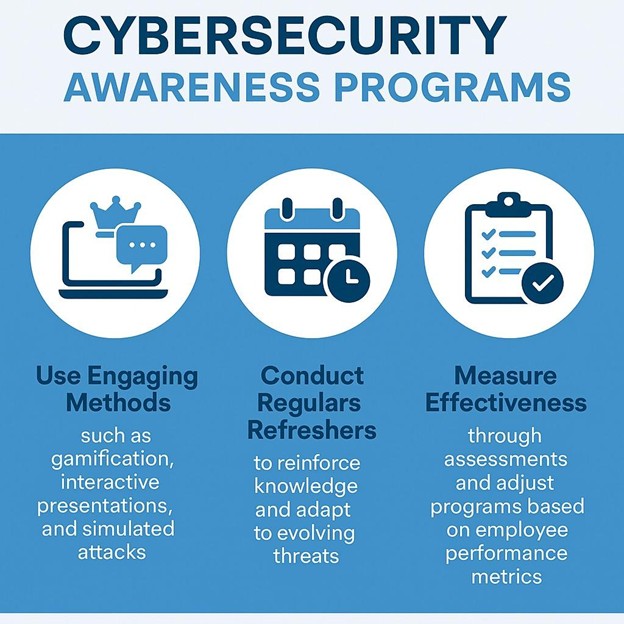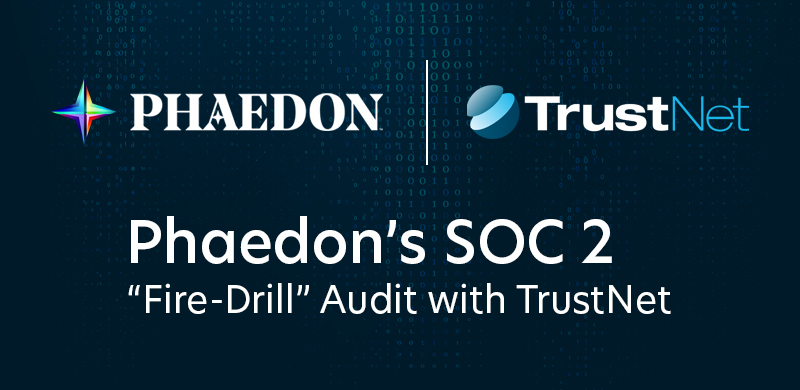Cybersecurity Awareness: Training to Prevent Human Error

TL;DR
Human error caused 95% of breaches in 2024. Cybersecurity awareness training teaches employees to recognize threats, reduce risky behaviors, and respond quickly. This guide covers what awareness means, how to implement it, and why TrustNet’s training platform is the all-in-one solution to build a security-first workforce.
Human error contributed to 95% of data breaches in 2024, driven by insider threats, credential misuse, and user-driven errors, according to a new study by Mimecast. This statistic only means that without proper training, people become the weakest link. But with the right guidance, they can be your strongest defense line.
Cybersecurity awareness is the foundation of a strong digital defense. It refers to educating individuals, especially employees, on recognizing threats, understanding risks, and taking informed actions to prevent breaches.
In this article, you’ll learn:
-
- What cybersecurity awareness is and why it matters
- The core components of effective employee security training
- Practical steps for building a proactive, security-conscious culture
Let’s dive into how cybersecurity training can turn awareness into action and risk into resilience.
What is Cybersecurity Awareness?
Cybersecurity awareness means understanding the risks, threats, and safe practices that help individuals protect digital systems and data. It’s more than knowing that cyberattacks exist; it’s about recognizing how and why they happen and what actions prevent them.
Organizations use employee security training and cyber risk education to help teams develop this understanding. Cybersecurity awareness empowers people to make smarter decisions in real time, whether they’re opening emails, using corporate networks, or handling sensitive customer information.
At its core, cybersecurity awareness teaches employees to:
-
- Identify common threats, such as phishing, malware, and social engineering tactics
- Understand their responsibility in safeguarding systems and data
- Apply security best practices, like using strong passwords and reporting suspicious activity
- Minimize risky behaviors that attackers often exploit
This awareness turns each team member into a human firewall. When people understand the risks and take ownership of their role, organizations drastically lower the chance of breaches caused by everyday mistakes.
Ready to Turn Awareness Into Action? TrustNet’s cybersecurity awareness training programs are designed with expert-led modules, real-world simulations, and continuous learning tracks to equip your team with the tools they need to spot threats and stop them.
Key Components of Cybersecurity Awareness Training
Effective cybersecurity awareness training programs focus on practical knowledge and real-world scenarios. The best programs don’t just inform—they change behavior. Below are the core cybersecurity training components every organization should implement:
1. Phishing Simulations
Phishing remains one of the most common entry points for cyberattacks. Simulated phishing exercises train employees to:
-
- Spot suspicious emails and malicious links
- Recognize spoofed sender addresses and urgent language
- Think critically before clicking or sharing information
These simulations build real-world instincts that reduce risk.
2. Password Security
Weak or reused passwords give attackers easy access. Training should cover:
-
- How to create strong, unique passwords
- The importance of using password managers
- How and why to enable multi-factor authentication (MFA)
Reinforcing these basics helps close critical security gaps.
3. Social Engineering Awareness
Attackers often manipulate people, not just systems. Employees must learn to:
-
- Identify emotional triggers and persuasion tactics
- Verify identities before sharing sensitive information
- Stay alert to pretexting and impersonation attempts
Understanding the psychology behind attacks improves defense.
4. Incident Reporting
Quick reporting limits damage. Training should encourage employees to:
-
- Report suspicious activity immediately
- Know where and how to report incidents
- Understand that reporting isn’t optional; it’s essential
When employees act fast, organizations respond faster.
Each of these components strengthens your workforce against evolving threats. When combined, they form the backbone of a proactive security culture.
Benefits of Cybersecurity Awareness Training
The benefits of cybersecurity awareness go far beyond individual knowledge—they directly strengthen your organization’s ability to detect and prevent threats. Here’s how effective training delivers results:
1. Reduces Human Error
Human mistakes cause the majority of cyber incidents. Training helps employees:
-
- Avoid risky behaviors like clicking suspicious links or sharing credentials
- Understand how small actions impact broader security
- React quickly and correctly when faced with threats
Reducing human error directly lowers the chance of breaches.
2. Improves Security Culture
Awareness creates accountability. When employees take ownership of security:
-
- They stay alert to signs of phishing and social engineering
- They adopt safe practices as part of their daily work routines
- Security becomes a shared responsibility, not just IT’s job
A strong culture makes security second nature.
3. Helps Prevent Data Breaches
Trained teams make fewer costly mistakes. As a result:
-
- Sensitive data stays protected
- Attackers find fewer vulnerabilities to exploit
- Incident response becomes faster and more effective
Prevention always costs less than recovery.
4. Supports Regulatory Compliance
Frameworks like GDPR, CCPA, and HIPAA require organizations to protect data through proper training. Cybersecurity awareness programs:
-
- Align with legal obligations
- Reduce the risk of fines and investigations
- Demonstrate due diligence to auditors and regulators
Compliance isn’t just a box to check, it’s a defense strategy.
When you invest in training, you empower your team to take action that reduces cyber risks every day.
How to Implement Effective Cybersecurity Awareness Programs

Here’s how to implement cybersecurity awareness that sticks:
1. Use Engaging Methods
Traditional slide decks don’t change behavior. Use interactive training methods like:
-
- Gamified learning modules
- Realistic phishing simulations
- Scenario-based role-playing
Engagement boosts retention and helps employees respond confidently in real-world situations.
2. Conduct Regular Refreshers
Cyber threats constantly evolve. Your training should too. Build continuous learning programs that include:
-
- Quarterly knowledge refreshers
- Monthly security bulletins
- Just-in-time microlearning after incidents
Reinforcing knowledge over time keeps it top of mind.
3. Measure Effectiveness
Training without metrics misses the mark. Track performance through:
-
- Pre-training/post-training assessments
- Simulated phishing click rates
- Reporting and response rates
Use results to improve and personalize future training.
When you combine engaging content, regular updates, and data-driven improvements, your team becomes your strongest security asset.
Build a Workforce That Actively Defends Your Business
Human error drives the majority of security breaches, but with the right training, teams can recognize threats early and respond with confidence. If you want to prevent human error breaches and reduce cyber risks, you need more than occasional reminders — you need a system.
That system should be more than standalone training sessions. Effective security awareness training must be integrated into a broader Governance, Risk, and Compliance (GRC) strategy, ensuring that risk mitigation is not just reactive but proactive and continuous. By embedding awareness into your GRC framework, you create a culture of accountability and informed decision-making that aligns with organizational policies and regulatory requirements.
TrustNet’s Enterprise Awareness Training Platform delivers exactly that:
-
- User Training: Interactive content that goes beyond theory; videos, games, simulations, and real-world scenarios
- User Phishing: Automated phishing, vishing, and smishing drills using thousands of customizable templates
- Reporting: Executive-ready dashboards and detailed analytics to track progress and prove impact
TrustNet helps you turn awareness into action, and people into your first line of defense. Connect with us today.
Subscribe to the TrustNet Newsletter
actionable cybersecurity strategies, and TrustNet’s cutting-edge solutions.




